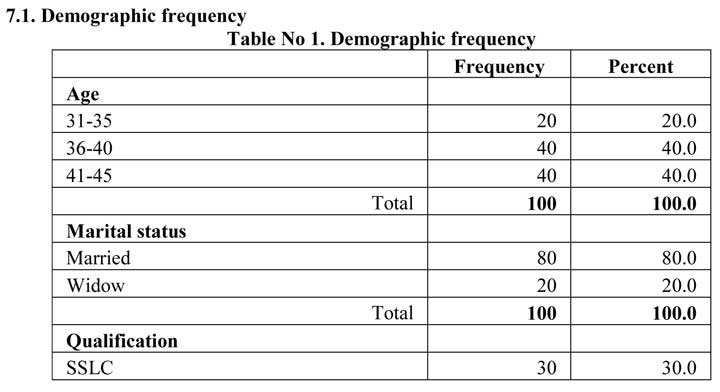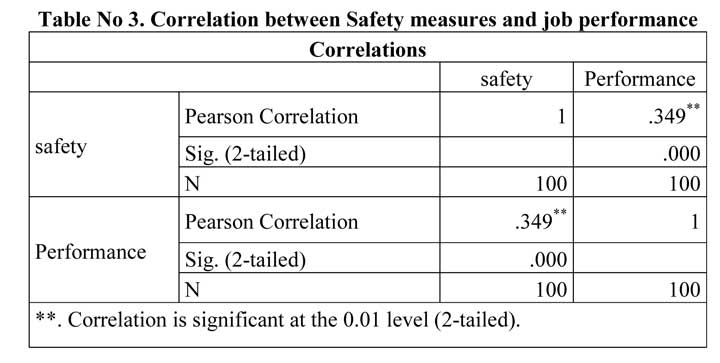Subscribe now to get notified about IU Jharkhand journal updates!
An effect of occupational stress and safety measures on job performance of accredited social health activist (ASHA)
Abstract :
Occupational stress affects job performance negatively and safety measure helps to enhance the job performance of the workers. However, this research study has undertaken to assess the effect of occupational stress and safety measures on the job performance of Accredited Social Health Activist (ASHA) during the COVID-19 pandemic. For this study, a nonprobabilistic convenient sampling method has been followed to collect data from 100 ASHA through well -structured questionnaire. The Majority of the respondents are housewives, married and having PU education. All the ASHA are selected through the National Rural Health Mission (NRHM). There is a negative and significant relationship between occupational stress and job performance of ASHA and a positive and significant relationship between safety measures provided to ASHA and job performance. This research work is limited to only 100 respondents of Mudalagi and Gokak talukas of Belagavi district, Karnataka.
Keywords :
ASHA, Occupational Stress, Safety measure, Job performance.1. Introduction
Accredited Social Health Activist (ASHA) are the real workers those who reach public in awareness of health program. They have done wonderful job during the covid-19. They play a significant role in execution of strategy of National Rural Health Mission (NRHM). ASHA selected from the society, whose age between 25 and 45 years, and should literate at least up to 8th class having communication and leadership skills to reach strategies of the NRHM. As she is the honorary worker would be paid honorary incentive based on performance in promoting of health related activities. ASHA are allowed to undergo training to enhance performance with respect to counseling, identification of health related problems and to reinforce her to deal with the situations. According to Press Information Bureau, Government of India, Ministry of Health and Family Welfare (Sept.2019) there are 10,47,324 ASHA (including link workers) are working in India (Asha Bullappa and Prakash Kengnal; 2017).
As the ASHA is working in the society, she cannot judge or predict the happenings related to health issues. It has most significant during the covid-19. Though the covid-19 was so spreading rapidly and dangerous, the ASHA were worked daringly and working now also. However this research study has attempted to understand and to know the occupational stress and safety measures with respect to their job performance.
2. Statement of the problem
Occupational stress (distress) is like air, it can be found in any Place, situation, organization, person, profession, etc. The each and every employees or a person get sick by occupational stress (Distress) one or the other way and the same would be effecting on their work performance. In the matter of ASHA safety measures play a vital role to enhance job performance and could be help to minimize their distress level.
Thus, to assess the occupational stress and safety measure and its effect on job performance of ASHA is significant. However, finally the study has done on “An Effect of Occupational Stress and Safety Measures on Job Performance of Accredited Social Health Activist (ASHA)”
3. Literature
Spoorthy Sagar, and et. al (2017) in their research article on “Professional stress levels among healthcare workers of Nelamangala: a cross sectional study” have applied multi stage random sampling technique in the study. Researchers were interviewed respondents by means of pre tested semi-structured questionnaire to collect primary data. Descriptive statistic and chi-square was applied to analyze the data. They found that 37.1 percent had mild stress, 52.1 percent were moderately stressed, and 10.7 percent were severely stressed. The factors such as working hours, job satisfaction, clarity about work, amount of work exceeding stipulated time, loss of interest at work, not being rewarded and valued for their work are directly associated with level of stress among the respondents. Finally they concluded that work related factors are main stressors and higher level of stress might obstruct the workers’ performance.
Mayadhar Panda, Sikata Nanda, and Rama Chandra Giri (2019) in their research work titled “A study on the work profile of ASHA workers in a district of Odisha in eastern India” have aimed to study the socio demographic determinants, work profile, the knowledge, awareness and practice of roles and responsibilities in the delivery of health care services of the ASHA workers. The pre-tested questionnaire was employed to collect the required data. The 93 percent of ASHA workers were trained regarding first AID and DOTs training; majority of the ASHA’s accomplish their duties such as delivery cases and aware about family planning activities. They concluded that should strengthen the role of ASHA on primitive and preventive health care particularly.
Anurag Mishra, and et. al (2011) in their work entitled “Factors Affecting Accredited Social Health Activist (ASHA) Performance in Uttar Pradesh, India” have collected through Monitoring, Learning & Evaluation of Technical Support Unit (MLE-TSU). The data was selected 579 out of 600 ASHA through simple random sampling method. Further they found that there is positive and significant association between the motivation level of ASHA and number of pregnant women, visited in past one month in their area; Job related motivation is positively associated with visiting to number of pregnant women; and high motivation is significant. They suffer stress due to balancing work and personal life. This can be erased though proper motivation ad that leads to increase in the performance.
Ratnawat R.G. and Jha P.C. (2014) in their article titled “Impact of Job Related Stress on Employee Performance: A Review and Research Agenda” have been observed that an impact of occupational stress on job performance of the employees. They have found several factors of job stress and their impact on job performance. The researchers were discussed more regarding Occupational stress index (OSI).
Grace Katunge Jonathan and Rosemary Wahu Mbogo (2016) in their research entitled “Maintaining Health and Safety at Workplace: Employee and Employer’s Role in Ensuring a Safe Working Environment” have conducted descriptive research. A questionnaire was utilized to collect data and the same was analyzed by using SPSS. They found that majority of the teachers were not engaged in the training that would provide them safety skills in their workplace. The safety of teachers at workplace affecting their awareness on matters pertaining health hazards and its affecting their general performance.
4. Objectives
- To study the sociao-demographic determinants of Accredited Social Health Activist (ASHA)
- To assess occupational stress of ASHA on their job performance
- To assess safety measures of ASHA on their job performance
5. Hypothesis
H11: There is negative relationship between occupational stress and job performance
H12: There is positive relationship between safety measures and job performance
6. Methodology
This descriptive research study has undertaken to assess an effect of occupational stress and safety measures on the job performance of Accredited Social Health Activist (ASHA) during the COVID-19 pandemic. The non probabilistic convenient sampling method has followed to collect data from 100 ASHA through well structured questionnaire including demographic, occupational stress, safety measures, and job performance having 5 point Likert scale strongly agree to strongly disagree. The data was analyzed and interpreted using tools such as simple percentage and correlation with the help of SPSS.20.0. This research work is limited to only 100 respondents of Mudalagi and Gokak talukas of Belagavi district, Karnataka.
7. Analysis and interpretation


The table no. 2 reveals that there is a negative relationship between the occupational stress and job performance of the ASHA . The Pearson’s value -0.429 shows that there is negative correlation and Sig. or P-value is 0.000 < 0.05 shows that there significant relationship between the variables. Hence the null hypothesis has been rejected i.e. H01: There is no negative relationship between occupational stress and job performance. Finally accepted alternative hypothesis i.e. H11: There is no negative relationship between occupational stress and job performance. It shows that as increase in the occupational stress, job performance of the employees would decreases and vice-versa.
Hypothesis: 2
H02: There is no positive relationship between safety measures and job performance
H12: There is positive relationship between safety measures and job performance

Table no.3 shows that there is positive relationship between the safety measures and job performance of the ASHA. The Pearson’s value 0.349 and p-value 0.000< 0.05 shows that there is positive and significant relationship between the variables. Hence the null hypothesis has been rejected i.e. H02: There is no positive relationship between safety measures and job performance. Finally, opined that there is a positive relationship between safety measures and job performance of ASHA. It also shows that as increase in the safety measure for ASHA would increase their job performance and vice-versa.
8. Findings
- Majority of the respondents are housewives.
- All the ASHA are selected through National Rural Health Mission (NRHM).
- The above table reveals that majority of the respondents’ age is more than 36. It shows that aged women are actively participating as ASHA.
- 80 percent of the ASHA are married and rests are widow.
- 90 percent of the respondents’ qualification is up to PUC.
- More than 60 percent of the respondents are having more than 6 years of experience.
- Majority of the respondents are replied that they joined ASHA because to serve or to help the society.
- There is negative and significant relationship between occupational stress and job performance of ASHA.
- There is positive and significant relationship between safety measures provided to ASHA and job performance.
- Time was the major constraint.
- This research work is limited to only 100 respondents.
- Mudalagi and Gokak talukas of Belagavi district, Karnataka only covered.
10. Conclusion
Occupational stress (Distress) is evil to each and every person on the earth. ASHA are also not free from this. Job stress of ASHA workers is negatively affecting on their job performance. They might be stressed more because of no availability of proper safety measures. However this research also examined effect of safety measure on job performance of ASHA. It found that there is positive and significant relationship between the safety measures and job performance of ASHA workers. It shows that ASHA are expecting proper safety measures to perform their work efficiently and effectively along with the other requires benefits.
References
- Anurag Mishra, Ranajit Sengupta, Ashish Mishra, Amenla Nuken and Anita Raj (2011) Factors Affecting Accredited Social Health Activist (ASHA) Performance in Uttar Pradesh, India. JOEM, Volume 53, Number 8, pp. 1-12.
- Asha Bullappa and Prakash Kengnal (2017). Assessment of quality of life of ASHA workers using WHOQoL-BREF questionnaire. International Journal of Community Medicine and Public Health. Vol 4. Issue 6 2060-2064
- Grace Katunge Jonathan and Rosemary Wahu Mbogo (2016). Maintaining Health and Safety at Workplace: Employee and Employer’s Role in Ensuring a Safe Working Environment. Journal of Education and Practice. Vol.7, No.29. pp. 1-7.
- https://pib.gov.in/newsite/PrintRelease.aspx?relid=200175/25/04/2020
- Mayadhar Panda, Sikata Nanda, and Rama Chandra Giri (2019). A study on the work profile of ASHA workers in a district of Odisha in eastern India. International Journal of Community Medicine and Public Health. Vol 6, Issue 2. 675-681.
- Ratnawat R.G. and Jha P.C. (2014). Impact of Job Related Stress on Employee Performance: A Review and Research Agenda. IOSR Journal of Business and Management (IOSR-JBM). Volume 16, Issue 11.Ver. V. PP 01-06.
- Spoorthy Sagar, Ravish K. S., Ranganath T. S., Mohammed Tanveer Ahmed and Shanmugapriya D.(2017). Professional stress levels among healthcare workers of Nelamangala: a cross sectional study. International Journal of Community Medicine and Public Health. Vol 4, Issue 12. 4685-4691.
